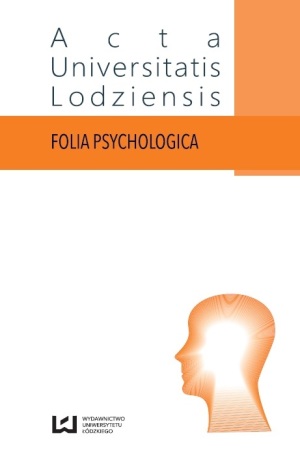SPÓJNOŚĆ I ZRÓŻNICOWANIE TYPÓW OSOBOWOŚCI ZAWODOWEJ WEDŁUG J. L. HOLLANDA A POZIOM NATĘŻENIA WYBRANYCH WYMIARÓW PSYCHOLOGICZNYCH
RELATIONSHIP BETWEEN CONSISTENCY AND DIFFERENTIATION J. L. HOLLAND’S VOCATIONAL PERSONALITY PATTERNS AND THE INTENSITY OF PARTICULAR PSYCHOLOGICAL FEA
Author(s): Anna Paszkowska-RogaczSubject(s): Psychology
Published by: Wydawnictwo Uniwersytetu Łódzkiego
Keywords: personality; career; occupation
Summary/Abstract: Tested hypothesis derived from J. L. Hollan d’s (1997) theory of vocational choice: relations between combination of levels personality dimensions (Consistency, and Differentiation) and three work related personal variables (Self-Control, Acquiescence and Pragmatism). Holland’s Vocational Preference Inventory – VPI (Polish version 1998 by Nosa l, Piskorz i Ś w i ą t - nick i) was used to identify consistent-inconsistent and differentiated-undifferentiated vocational patterns. Measures of Self-Control and Acquiescence were also computed using the VPI. Wojciszke’s The Pragmatism Scale (derived in part from the Self-Monitoring Scale and based on M. Snyder’s – 1974, 1979 – theory of the pragmatic and principled selves) was used to identify level of Pragmatism. Ss were 100 person, 66 women and 34 men, ages 23 to 61 years (M = 34,86,SD = 10,88) with higher level of education. They represented conventional and social types of vocation. Ss’ scores on VPI inventory using cluster analysis were grouped into three combinations of personality profiles – Consistent/Differentiated, Inconsistent/Differentiated, and Inconsistent/Undifferentiated. By using clusters as independent variables was found that Inconsistent/Undifferentiated profiles had the lowest Acquiescence scores and Consistent/Differentiated had the lowest Self-Control scores. Inconsistent/Differentiated profiles were associated with the highest Pragmatism.
Journal: Acta Universitatis Lodziensis. Folia Psychologica
- Issue Year: 2009
- Issue No: 13
- Page Range: 103-116
- Page Count: 14

